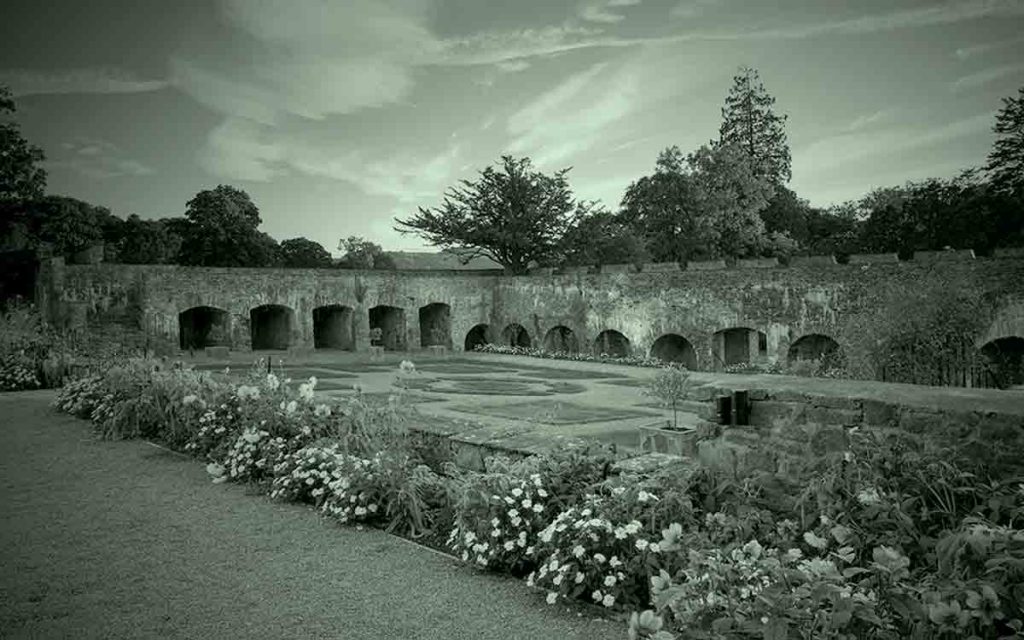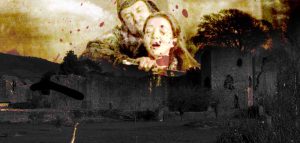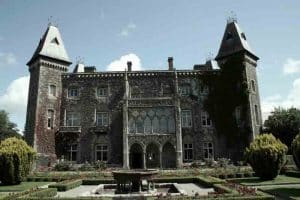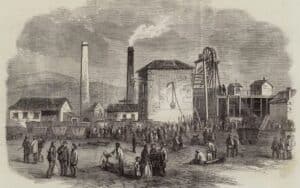Aberglasney Gardens in Carmarthenshire, Wales, has a ghost and ghastly past, says RHEA SEREN PHILLIPS

Tucked away in the sleepy area of Carmarthenshire, hidden down a secluded road and thick trees, Aberglasney Gardens attracts hundreds of visitors every week.
It provides a piece of paradise and quiet for many, but this garden wasn’t always quite so peaceful and some believe that the area is home to a battalion of ghostly beings.
History of horror at Aberglasney Gardens
Since the 1200s, the area has been steeped in blood and violence with two major battles being fought on nearby fields.
It has been said that many who live in the shadow of the hill are cursed; nothing could be truer than Aberglasney house and gardens, with its idyllic appearance tempered by the pain and loss of its past inhabitants.
The house and gardens were established by Bishop Rudd of St. David’s church upon his retirement in the early 1600s, dreamed to be a future family home.
Unfortunately the family only remained there for the next hundred years, falling into debt and selling the estate in 1710; this signalled the start of a trend that was to become the curse of Aberglasney.
In the 1700s the house was bought by the Dyers family, and then at the turn of the century another aristocratic family bought the failing house, and so on until the 1900s when it was sold to a local farmer who allowed the house to fall into disuse and abandonment.

In the 20th century it was bought by the Aberglasney Restoration Trust, aided by an American sponsor and restored to the thriving gardens you can see today.
See, below, the pleasant dome,
The poet’s pride, the poet’s home…
See her woods, where Echo talks,
Her gardens trim, her terrace walks,
Her wildernesses, fragrant brakes,
Her gloomy bowers and shining lakes,
Keep, ye gods, this humble seat,
For ever pleasant, private, neat.
– John Dyer (1800s) – ‘The Country Walk’
Amidst its turbulent past there are certain inhabitants that refuse to disappear, awoken perhaps by the extensive work that continues to go on in the ardent pursuit of bringing the house and gardens back to its former glory.
Blue Room haunting at Aberglasney Gardens
The most compelling haunting is said to be that of the ‘Blue Room’, one of the rooms upstairs that housed maids in the 1630s.
A maid working during that time reported seeing five lit candles floating around the room.

The morning after the sighting five maids were found dead in their beds, presumably from asphyxiation that occurred when the stove was left burning throughout the night.
The ‘Blue Room’ remains the most active room in the house with accounts from visitors feeling mysterious bodies brush past them and a sense of unease and negativity that compels them to leave.
The most promising evidence of these ladies came about in the 1930s when two workmen were clearing the ivy from the front of the house.
Brushing ivy away from the upstairs window the man slid down the ladder to his co-worker, his face pale and his hands shaking, he claimed to have seen a Victorian lady staring out at him.
Many people from the area have recounted seeing five lights in the upstairs window during nights when the house was meant to be empty, these lights have since coined the name, ‘The Corpse Candles’.
A sighting is said to predict a tragic event or death, and many locals refuse to visit the area during nightfall.
Whether you visit in the day or night, the house that resides in the shadow of the hill is sure to give you goose bumps; should you find the courage to visit at all that is.
RHEA SEREN PHILLIPS lives in Camarthenshire, Wales. From home she manages Peregrine Editing, a bespoke poetry and editorial service.






